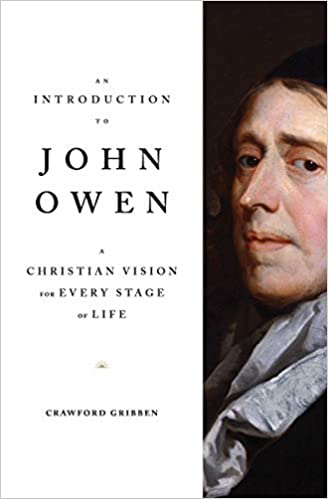A Book Review from Books At a Glance
By Ryan McGraw
The time in which John Owen lived was one of the most interesting and momentous in British history (44). While interest has grown over the past century in Owen’s ideas, few have drawn attention to his spirituality in the context of his life. This unique volume helps readers understand Owen’s spirituality in the context of who he was and when he lived. We receive, as a result, an Owen who is more than a talking theological head and one that can help us learn to persevere in faith and love to Christ in uncertain times and through many hardships.
Gribben divides his material into Owen’s counsel to believers in childhood, youth, middle age, and in facing death and eternal life. His introduction provides a cautious summary of Owen’s life and significance, since Owen did not leave his readers much to go on (e.g., his comments to this effect on pg. 31). Some corrections to his earlier impressive work on Owen appear at times as well (e.g., 30). The author often has an intuitive grasp of Owen’s character that rings true with his writings and life circumstances.
The section on childhood is particularly noteworthy in that the author draws attention to Owen’s 1652 primer for young children, which is not included in current editions of his Works. He even includes in an appendix some prayers from this publication, which Owen wrote as a model for children to learn how to pray (155-158). The fact that he wrote this book while teaching students at Oxford University shows the depth and range of his spiritual concerns for the church.
Gribben also notes Owen’s shift from his early views on baptismal regeneration to later stressing that the sacrament, which still belonged to the infants of believers, was a sign and seal of grace that they might receive later in life (54). However, Gribben overreaches slightly when he asserts that for Owen baptism no longer provided entrance into church membership. In volume 15 of his Works, Owen affirmed that the infants of believers were still church members, but in a different sense than adult believers were. In any case, this is a minor quibble since tensions remained between his Congregationalist principles of church membership and retaining the practice of infant baptism.
The remaining chapters unfold Owen’s spirituality through his own struggles through youth, middle age, and the approach of death. Gribben introduces key samples of Owen’s writings as they developed during these times of personal struggle. This makes Owen’s teaching become three dimensional and realistic in light of his own trials, confusion, and often depression. These features give readers material that they would not find by simply reading Owen’s Works without knowing what to look for. As such, this is an invaluable guide for those who not only want to read Owen, but to read him well.
Gribben notes that “By any account, John Owen (1616-1683) was extraordinary” (26). He wrote over 80 books and around 8 million words. Such facts can make reading him daunting. This useful guide to Owen’s life and spirituality will help many grow in grace and in the knowledge of God through Christ. Owen certainly shared this goal, and he can help us pursue it through prayerful reflection on his life and legacy.
Ryan M. McGraw
Greenville Presbyterian Theological Seminary
